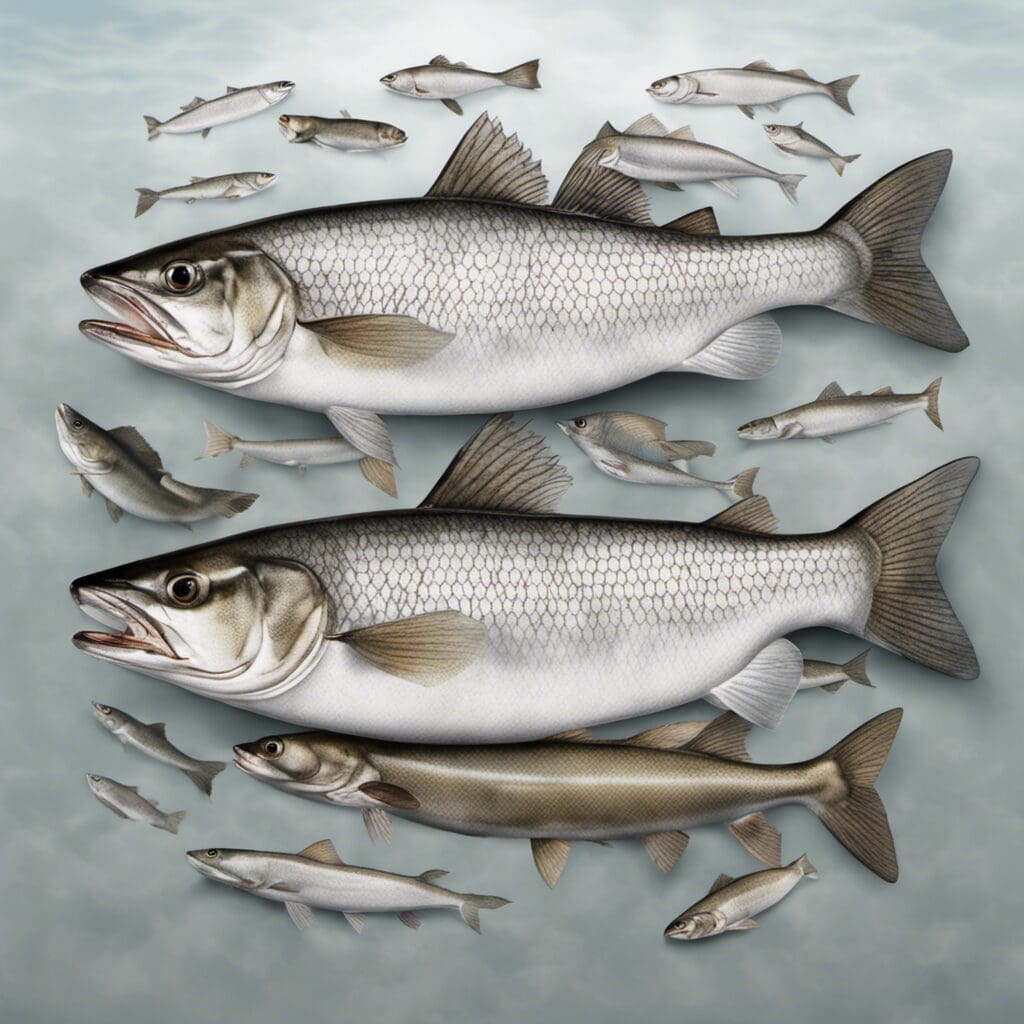Introduction
The Lake Whitefish, scientific name ”Coregonus clupeaformis”, belongs to the Salmonidae family. It is a popular fish known for its flaky texture and mild, nutty flavor.
Conservation Status
As per the recent reports from the National Wildlife Federation, the Lake Whitefish enjoys a stable conservation status. A variety of monitoring and conservation efforts by the US Fish and Wildlife Service and other organizations have led to this status, including habitat restoration projects and fishing regulations.
Statistics
| Stat | Average | Range |
|---|---|---|
| Length | 17-22 inches | 12-31 inches |
| Weight | 2-4 pounds | 1-10 pounds |
| Lifespan | 10 years |
Distribution
Lake Whitefish are found across North America, particularly in the Great Lakes region of U.S. and Canada. They do not exhibit any remarkable migration patterns, mainly staying within their native freshwater habitats.
Habitats
Lake Whitefish are freshwater fish. They prefer a depth range of 25 to 105 feet and water temperatures between 4°C to 7°C.
When and Where to See
Peak viewing times for Lake Whitefish typically align with their spawning periods during late autumn and early winter. As they generally feed early and late in the day, these are the best times for sightings.
Best Fishing Locations
Popular fishing spots for Lake Whitefish range from Lake Superior and Lake Huron in Michigan to the Great Bear Lake in Canada. The species does not have specific hideouts, but they are more likely to be found near the lake bottoms.
How to Catch
Lake Whitefish typically respond well to a variety of baits and lures, from live worms to artificial jigs. They are often fished using traditional angling techniques as well as ice fishing in winter. Best times to fish are typically dawn and dusk, in sync with the whitefish’s feeding times.
Identification Guide
Lake Whitefish have a silvery color with a white underbelly, long bodies, and small heads. Their arching back distinguishes them from the closely related Cisco species.
Culinary
These fish are excellent for consumption, offering a mild, slightly nutty flavor and flaky texture. They often feature in various recipes, from smoked whitefish to the classic whitefish chowder. Nutritionally, these fish are rich in proteins, vitamins, and heart-healthy Omega-3 fatty acids.
Additional Information
Lake Whitefish feed primarily on small invertebrates, insects, and some plant matter. They face natural threats from larger predatory fish and eagles, along with human-induced threats from overfishing and habitat destruction. Historically, these fish played significant roles in the diets and cultures of Native American tribes around the Great Lakes region.
References and Further Reading
For more information, refer to resources such as the US Fish and Wildlife Service website, the National Wildlife Federation’s species guide, and the Michigan Department of Natural Resources’ publications on Lake Whitefish and related species

